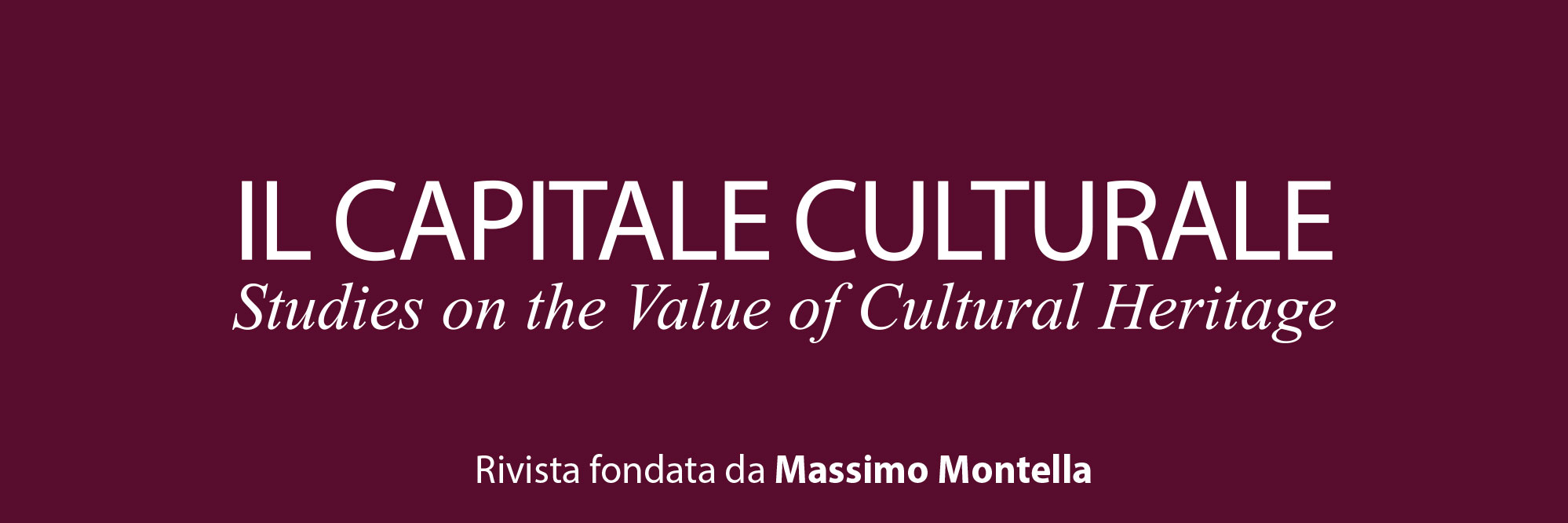Performative embodied identities: using acting and storytelling to explore identity and careers
Downloads
Pubblicato
Fascicolo
Sezione
Licenza
Tutti i materiali pubblicati sono coperti da copyright, mantenuto dall'Università di Macerata che ne supporta finanziariamente e tecnicamente la pubblicazione.
La licenza adottata è la Creative Commons - Attribuzione/Condividi allo stesso modo. Ovvero, gli autori che pubblicano su questa rivista accettano le seguenti condizioni:
- Gli autori mantengono i diritti sulla loro opera e cedono alla rivista il diritto di prima pubblicazione dell'opera, contemporaneamente licenziata sotto una Licenza Creative Commons - Attribuzione che permette ad altri di condividere l'opera indicando la paternità intellettuale e la prima pubblicazione su questa rivista.
- Gli autori possono aderire ad altri accordi di licenza non esclusiva per la distribuzione della versione dell'opera pubblicata (es. depositarla in un archivio istituzionale o pubblicarla in una monografia), a patto di indicare che la prima pubblicazione è avvenuta su questa rivista.
- Gli autori possono diffondere la loro opera online (es. in repository istituzionali o nel loro sito web) prima e durante il processo di submission, poiché può portare a scambi produttivi e aumentare le citazioni dell'opera pubblicata.
DOI:
https://doi.org/10.13138/2039-2362/3126Abstract
During October 2021, Staffordshire University Department of Media, Performance and Communication hosted an intensive week for the DICO project. Looking at oral storytelling, narratology, acting and embodiment, participants explored how to use these techniques and methodologies in two ways. Firstly, as process, whereby these become enablers to reflect and explore past and present career stories, by creating a narrative around this, as well as imagining a future self. Secondly, as vehicles for product in their own right: to create a career story as an output using these forms. This chapter steps us through some of the key practices of that week and introduces the critical framework.
Riferimenti bibliografici
Ang G.P., Ranice T.K.X. (2022), Cultivating vessel and voice: embodiment as a way of being in performer training, «Theatre, Dance and Performance Training»,13, n. 2, pp. 214-221.
Bacon J. (2010), The Voice of Her Body: Somatic Practices as a basis for creative research methodology, «Journal of Dance and Somatic Practices», 2, n. 1, pp. 63-74.
Bessell J. (2019), Shakespeare in Action: 30 Theatre Makers on their Practice, London: Bloomsbury.
Callery D. (2015), The Active Text: Unlocking Plays through Physical Theatre, London: Nick Hern Books.
Dieterich-Hartwell R. (2017), Dance/movement therapy in the treatment of post-traumatic stress: A reference model, «The Arts in Psychotherapy», n. 54, pp. 38-46.
Gintis B. (2007), Engaging the Movement of Life: Exploring Health and Embodiment Through Osteopathy and Continuum, Berkeley, CA: North Atlantic Books.
Grove J. (2021), Turn a CV into a Compelling Tale, «Times Higher Education», 5th August 2021, p. 18.
Halprin D. (2003), The Expressive Body in Life, Art and Therapy: Working with Movement, Metaphor and Meaning, London: Jessica Kingsley Publishers.
Hillman J. (1997), The Soul’s Code: In search of character and calling, London: Bantam Books.
Hrach S. (2021), Minding Bodies: How Physical Space, Sensation, and Movement Affect Learning, Morgantown: West Virginia University Press.
McCaw D. (2020), Rethinking the Actor’s Body: Dialogues with Neuroscience, London: Bloomsbury.
Monday M. (2017), Directing with the Michael Chekhov Technique, London: Bloomsbury.
Norrthon S. (2019), To stage an overlap – The longitudinal, collaborative and embodied process of staging eight lines in a professional theatre rehearsal process, «Journal of Pragmatics», n. 142, pp. 171-184.
Petit L. (2010), The Michael Chekhov Handbook: For the Actor, London: Routledge.
Rossmanith K. (2003), Making Theatre Making: Rehearsal Practice and Cultural Production, PhD, University of Sydney, https://ses.library.usyd.edu.au/handle/2123/2007, 11.09.2019.
Rushe S. (2019), Michael Chekhov’s Acting Technique. A Practitioner’s Guide, London: Methuen.
Stromsted T. (2001), Re-inhabiting the female body: Authentic Movement as a gateway to transformation, «The Arts in Psychotherapy», 28, n. 1, pp. 54-55.
Walsh M. (2021), The Body in Coaching and Training: an introduction to embodied facilitation, London: Open University Press.
Williamson A. (2009), Formative support and connection: somatic movement dance education in community and client practice, «Journal of Dance and Somatic Practices», 1, n. 1, pp. 29-45.




